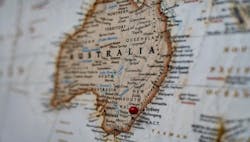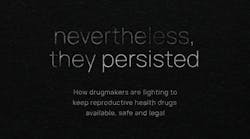There’s a phrase insiders like to use to describe Australia’s pharma industry: punching above its weight.
Although the country is home to just under 26 million inhabitants, Australia ranks in Scientific American’s top five countries for biotech activity. And its roughly 230,000 employees in pharma — according to 2017 estimates from trade organization AusBiotech — are known for their world-class skills in scientific research.
“Australia’s great strength is that we have very highly skilled professionals in our industry, and an exceptionally great talent pool,” Gisela Mautner, president of the Australian Pharmaceutical Professionals Association (APPA), says.
The science-fueled environment has helped bolster a healthy clinical trial landscape. Between 2010-2018 Informa Pharma Intelligence estimates that the number of new trial starts in Australia grew each year by about 4.1%, outpacing the global compounded annual growth rate of 2.5%.
The emphasis on leading-edge treatments has also trickled down to clinicians in Australia, who are resourceful and adept at delivering modern, high-tech therapies to patients.
“Our clinicians look to the world,” Mautner explains. “The U.S. and EU both have their own approach. But our clinicians look to the U.S. as well as the EU and pick whatever’s best. So we get to apply the best of these various treatment options, and we have modern facilities to do them in.”
But while the R&D and clinical world has stayed on the cutting edge of modern medicine, the country’s manufacturing industry has slipped through the cracks of Australia’s economy. Naturally, COVID-19 has heightened awareness of the growing problem, and now the country is looking to funnel the same kind of support it has created for R&D into manufacturing as well.
Manufacturing erosion
“It’s been a slow death of drug manufacturing,” Mautner says. “This is maybe why the government didn’t realize it and didn’t see the urgency to do anything about it. COVID opened their eyes, so now things will change.”
Like many countries, drug manufacturing in Australia has slowly but steadily diminished over the years as companies have found cheaper alternative locations, particularly in Asia. Estimates by Statista in 2021 showed that Australia’s pharma sector now imports about four times as much as it exports, leaving it highly vulnerable in the global supply chain.
But as the pandemic has dragged on, talk of bringing it back has increased. Last year, the country’s former Industry Minister, Nick Minchin, wrote in The Australian Financial Review that, “It is tragic that manufacturing has more than halved as the share of our economy in just the last 20 years.”
Government backing of R&D has been strong in Australia since 2011 when the R&D Tax Incentive — which offers companies a refundable 38.5-43.5% tax credit for research conducted in the country — went into effect. Now, the focus is shifting to ways the government can bolster the manufacturing sector as well.
Early strategies in the pandemic involved repurposing existing facilities for critical medical supplies, which led gin distilleries to shift to hand sanitizer and packaging companies to suddenly make surgical masks. Yet, federal funds are now flowing in the direction of longer-term solutions.
Between 2014-2020, the country’s Advanced Manufacturing Growth Centre (AMGC) pumped $47.9 million into 78 different manufacturing projects, creating more than 2,100 jobs. And in July, the country announced a plan aimed directly at pharma. Called the Modern Manufacturing Initiative (MMI), the plan will provide $36 million in investments for Australian pharma manufacturing companies to help reduce the country’s reliance on overseas suppliers. The MMI is part of a broader $1.5 billion plan called the Modern Manufacturing Strategy developed to restore a high-quality, sustainable manufacturing sector in the country.
So far, the MMI initiative has doled out money to support a number of companies including Vaxxas, which produces a vaccination device that delivers doses with a “Band-Aid” like patch, and Noumed Pharmaceuticals, which plans to construct a new $85 million facility for drug manufacturing.
Don’t forget about Australia
Despite its reputation for burgeoning biotech activity, Mautner says that Australia’s far-off location can make it seem less attractive for multinational pharma companies scouting trial locations.
“Most of the Big Pharma companies are located in America or the EU, so whenever they start projects or studies it’s much easier to do them there,” Mautner says. “So it’s a constant effort to keep reminding them that we are here. That is a major challenge — to stay front of mind for global pharma headquarters.”
Because of the cost involved in getting a drug approved for the country’s government-funded Pharmaceutical Benefits Scheme, which provides free medication to Australia’s residents, some companies may even forgo seeking approval for their drugs in Australia altogether — a situation that has, in some cases, hampered access to potentially life-saving treatments.
“The cost of submissions is higher because you need a team of experts who do nothing but prepare those submissions,” Brigid Waite, an executive committee member with APPA, says. “It is one of the most robust processes in the whole world, and very few countries have as stringent of a process as we do.”
Although there are currently no initiatives aimed at lowering the cost of new drug submissions, Waite says the Australian government has identified pharma as a key area of needed growth and that the country will continue to woo pharma companies to its borders in other ways.
“The government has realized that there’s a major gap for manufacturing in general and then for pharma, so it will need to have [public/private] collaborations,” Waite says. “That is how we will work together going forward.”
Top image courtesy of Joey Csunyo via Unsplash.com.





